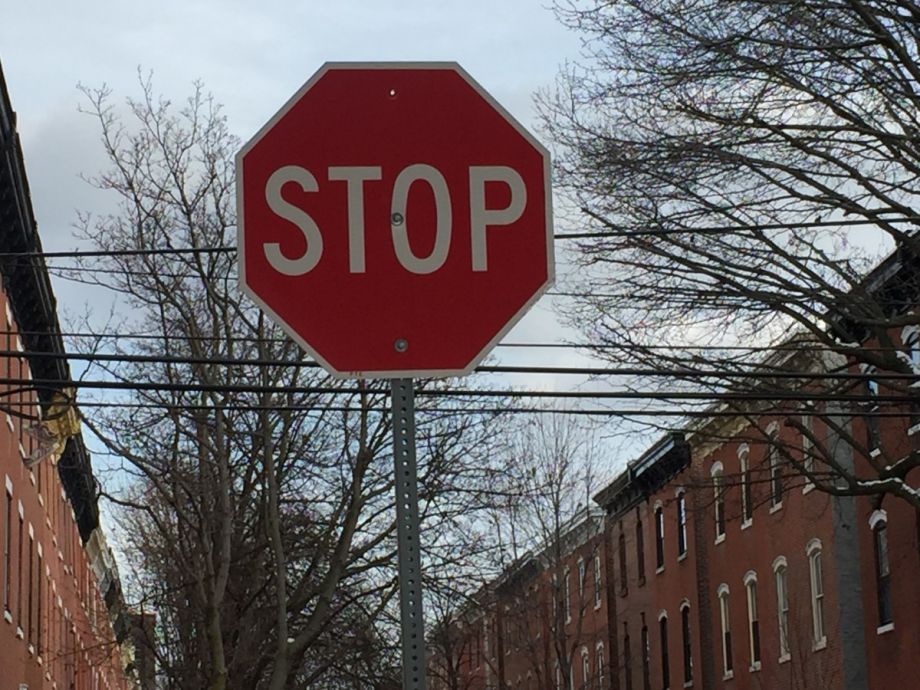It’s a new year and a new opportunity to think about how to be a better you. Maybe that means less sugar or more reading or more time away from your phone. Or maybe it means rethinking the words we use when talking about cities.
Like any subculture, urbanists and city planners and transportation nerds have their own jargon. And though sometimes industry-specific terms are necessary and helpful, they often obscure meaning and keep the subculture insular. Or, as is often the case, terms become vague over time or take on competing meanings depending on the context — to the point that they’re no longer helpful. With that in mind, I talked to a few transportation and planning experts from around the U.S. to come up with this list of eight commonly used words that would be best left behind in 2016.
Stroad
Stroad is a portmanteau of street and road that refers to wide, fast, highway-like city streets that prioritize driving speed over all else. Chuck Marohn of Strong Towns coined the intentionally ugly term to describe a problematic piece of infrastructure that didn’t have its own name. The term is fine among traffic engineers who know the functional difference between road and street. But stroad is popping up more broadly in the sector, and for most everyone else in the world, roads and streets are synonymous and a portmanteau of them means nothing.
Smart Cities
For some staffers at the Transit Center, an NYC-based foundation focused on urban mobility, the phrase “smart cities” is too broad to be useful. Director of Communications and Advocacy Jon Orcutt says the concept is “completely devoid of meaning [or] content.”
A “smart city” is one that uses technology and real-time data to make day-to-day operations more efficient. That could mean using sensors to monitor leaks in public utility lines or cameras to control traffic flow. U.S. DOT’s Smart Cities Challenge gave out grants to cities using technology to improve mobility. Given the term’s broadness and that it gets used interchangeably with smart growth (see below), it might be better to simply talk about the technology a city is using rather than trying to brand it as a smart city.
Livability
To some people, “livability” is a reference to the various elements in a growing city that improve quality of life: bike lanes, good sidewalks, street trees, densely built transit-oriented development and so on. To others, such as those in the Keep Seattle Livable campaign, it means single-family homes, easily available parking and sparse traffic. And therein lies the problem. Livability means two opposite things depending on which side of the pro- or anti-density spectrum you’re on. One term that means two things to competing ideologues just isn’t helpful.
Smart Growth
Smart growth suffers from the same vagueness as livability. A YIMBY testifying at a design review meeting would use it in support of upzoning to allow taller, denser construction. A NIMBY at that same meeting would say that smart growth protects the historical character of a neighborhood with low-density housing or no construction at all.
Road Diet
The concept of a road diet — reducing the number of traffic lanes in a given street to slow cars and make room for bike lanes and other elements — is fairly ubiquitous among transportation nerds. But mention a road diet to someone outside that circle and you’ll likely be met with a blank stare. Los Angeles County Bicycle Coalition Director Tamika Butler says it’s her number one least favorite planning term.
Cycletrack
“Cycletrack” seems to already be falling out of favor in the U.S., with “protected bike lane” or “physically separated bike lane” taking its stead. And that’s probably for the best. Unless you’re up on your National Association of City Transportation Officials design guide, a cycletrack is likelier to evoke an image of cyclists racing in a velodrome than a bike lane with planters and curbs.
Cyclist and Pedestrian
Of all the terminology on this list, I’m guiltiest of using cyclist and pedestrian for the sake of expedience. The debate over “people on bikes” and “people walking” versus cyclists and pedestrians has been raging for many, many years. Cascade Bicycle Club’s Blake Trask in Seattle explains why they are among his least favorite terms: “We refer to people as cyclists or pedestrians as if they are solely monomodal objects that aren’t people. Bleh.”
Many advocates worry that calling people cyclists or pedestrians erases their humanity in conversations about planning and safety. Rather than thinking of the mother, daughter, neighbor, friend who would benefit from a protected bike lane, the angry person testifying against the project thinks only of the faceless cyclist who’s taking away parking.
Shared Mobility
The term “shared mobility” grew out of the rise of the so-called “sharing economy,” a marketing catch-all that includes everything from Uber to AirBnB to TaskRabbit. Like most of the terms on this list, shared mobility suffers from vagueness. It refers to services that do require sharing, such as bike-share and Car2Go and ZipCar. But it also includes Uber and Lyft, which can only be considered sharing if buying a movie ticket counts as a theater sharing its films or paying for your meal counts as a restaurant sharing its food. “There’s not much sharing in most cases, unless old-school taxis and transit itself are also ‘shared mobility,’” notes Orcutt.
Now it’s your turn. What words do you think city planners and transportation advocates and urbanists should cut from their vocabulary in the new year?

Josh Cohen is Crosscut’s city reporter covering Seattle government, politics and the issues that shape life in the city.
Follow Josh .(JavaScript must be enabled to view this email address)











